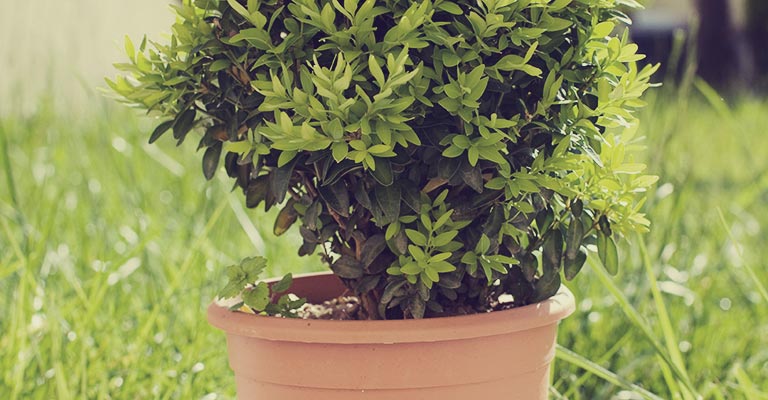10 Tips on Protecting Potted Trees from Frost

Trees are adaptable plants and most perform well in containers. However, trees grown in pots don’t have the same level of protection as those grown in the ground and even the hardiest trees can suffer when the mercury plummets.
To ensure your tree survives winter chill, be sure to provide safeguards for the roots until the temperatures rise in spring. Potted trees don’t need much extra protection in USDA Zones 7 and above, but trees in more northern climates definitely need a little assistance.
Most importantly, protect the trees from repeated freezing and thawing, which can push the tree completely out of the pot.
The following tips will help:
- Consider your growing zone carefully when planting trees in containers, and choose a plant a couple of zones lower than your actual zone. For example, if you live in USDA plant hardiness zone 7, choose a plant suitable for growing in zone 5.
- Place the pot on soil, which provides better insulation than concrete, wood or pavement. Winter sun can warm pavement during the day, setting the roots up for substantial damage when temperatures drop below freezing at night.
- Plant your tree in the biggest pot possible. Larger pots hold more soil to insulate the roots, and more soil takes longer to freeze. Small containers, on the other hand, dry out faster and freeze quickly. A pot with a thickness of at least 1 inch (2.5 cm.) provides a little extra protection. If you’re heart is set on a smaller container, insert it in a larger pot and surround it with Styrofoam peanuts.
- Most pots, including those made of metal, wood, or fiberglass can withstand freezing temperatures. However, pots constructed of porous materials such as ceramic and terra cotta are more likely to crack when absorbed water freezes. Plastic withstands cold temperatures but lightweight pots are more likely to blow over in strong winter winds.
- Group several pots together on the north or east side of the house, or in a location where they are sheltered by a wall. Place the hardiest plants on the outside of the grouping, then surround the entire group of pots with straw bales. Keep in mind that trees in shady areas with minimal temperature fluctuations may fare better during the winter.
- Avoid fertilizing potted trees after mid-summer. Tender new growth generated by feeding too late in the season is more susceptible to damage.
- Forego pruning until spring. Like fertilization, pruning stimulates tender new growth.
- Mulch potted trees with at least 2 inches (5 cm.) of straw, bark chips or dry, chopped leaves, but allow about an inch (2.5 cm.) around the base of the trunk. Soggy bark is more susceptible to freezing.
- If you live in a cold climate, you can dig a hole and bury the entire pot up to the rim. You can also wrap pots in burlap, bubble wrap or old blankets.
- Water pots occasionally if winter weather is dry, preferably when temperatures are above freezing. Water is especially important for evergreens, which are prone to desiccation. Moisture actually insulates the roots and provides some protection.
